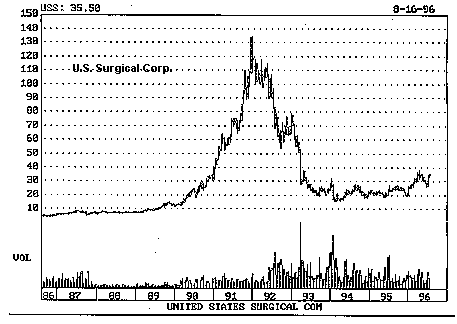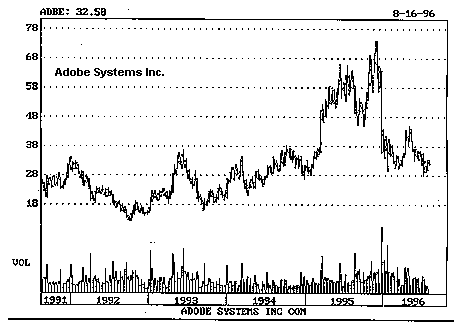
Into every investor's life a little rain must fall!
No matter how hard one tries to study the stock market and back test data to find a good trading plan, there will always come a day when a stock you are holding falls precipitously and unexpectedly.
In the past few years there have been some dillies, U.S. Surgical Corp., Adobe Systems Inc., Spartan Motors Corp. and Comptrex Inc. etc. The scenario probably goes something like this. You own a stock and it has just pulled back a few points over the past few days and has been acting weak. Then all of a sudden one morning it doesn't open.


The stock has been halted pending a news announcement. Then comes the news: earnings will be up 120%. But the stock gaps down 9 points to 21 from 30. You were in at 32 and now you are licking an 11 point loss, or 34% hit.
The reason for the drop: earnings were not up to Wall Street expectations. Oh! What a bummer. You never had a chance to get out.
Now, what do you do?
Hold and hope for a rebound or sell and take your loss?
Your emotions are in shock. You can't believe this has happened to you. Your feel pain, but more than that you feel embarrassed that you - yes you - now own the biggest loser of the day.
You might tell some close friends - psychologically looking for some comfort - or you might keep your lips sealed not wanting to reveal to others the losing mess you're in.
The first thing you need to do is pull yourself together and realize that big price gaps against you will happen from time to time, especially if you are investing in stocks with a high profile and a high price/earnings ratio.
Even the best baseball player will strike out with men on base sometimes and the best halfback in football will fumble sometimes. So, don't blame yourself. Study the stock's price pattern and see if you can find any clues that may have warned you of the big drop.
But don't overdue it. Sometimes surprises do come out of the blue. One top money manger accepts the fact 1 out of 40 or so stocks he buys may fall sharply and abruptly.
He accepts that as a percentage that comes with trading certain stocks. So, he allocates his assets among several stocks and does not over-concentrate in one issue. That's asking for it.
By diversifying to a certain extent, say by putting no more than 10% of one's assets, in one stock, a 30% drop will only dent the portfolio by 3%. By diversifying, you'll be putting up an umbrella of protection against a nasty surprise.
Generally speaking when a stock falls sharply, it has probably violated your sell rules - whether they be a specific price or an indicator that you are using such as a moving average or a trend line.
The stock is an obvious candidate to be sold. One should sell it and honor your trading strategy. The trap is to hold and hope it will come back.
Technically, if a stock falls 20% or 30% in one day, it will come with extremely heavy volume - known as climactic volume. After a day or so, it will stage a rally. Sometimes - but not always - the stock may eventually rally over several days about half the point drop it made. In another words, if the stock fell from 30 to 20, it could bounce back to 25.
In many instances, the stock will head lower again to "retest" the low at 20. The test could carry the stock to perhaps 19 but if it comes on low volume, it'll probably hold. The stock will then most likely begin trending sideways between 20 and 25 for several months with volume continuing to contract.
From that point , it is a toss up as to what will happen next. The stock may breakdown and go lower, or it could begin to trend back up again.
If the stock that suffered a sharp drop, "fails" in its first test of the climactic bottom and breaks below the prior low and picks up more volume, watch out. The stock is in a free-fall and it is best to be out completely. No questions asked.
If the stock should rally more than 50% from its initial plunge, that is positive. But the stock may find difficult going from there because it has "lost its luster," especially in regards to its institutional following. So, don't be in a hurry to go back in if you sold it.
To sum up, every one eventually gets hit with a stock that falls unexpectedly. The best strategy is to diversify and not concentrate too heavily in one stock. If it falls sharply, sell immediately and move on to another stock.